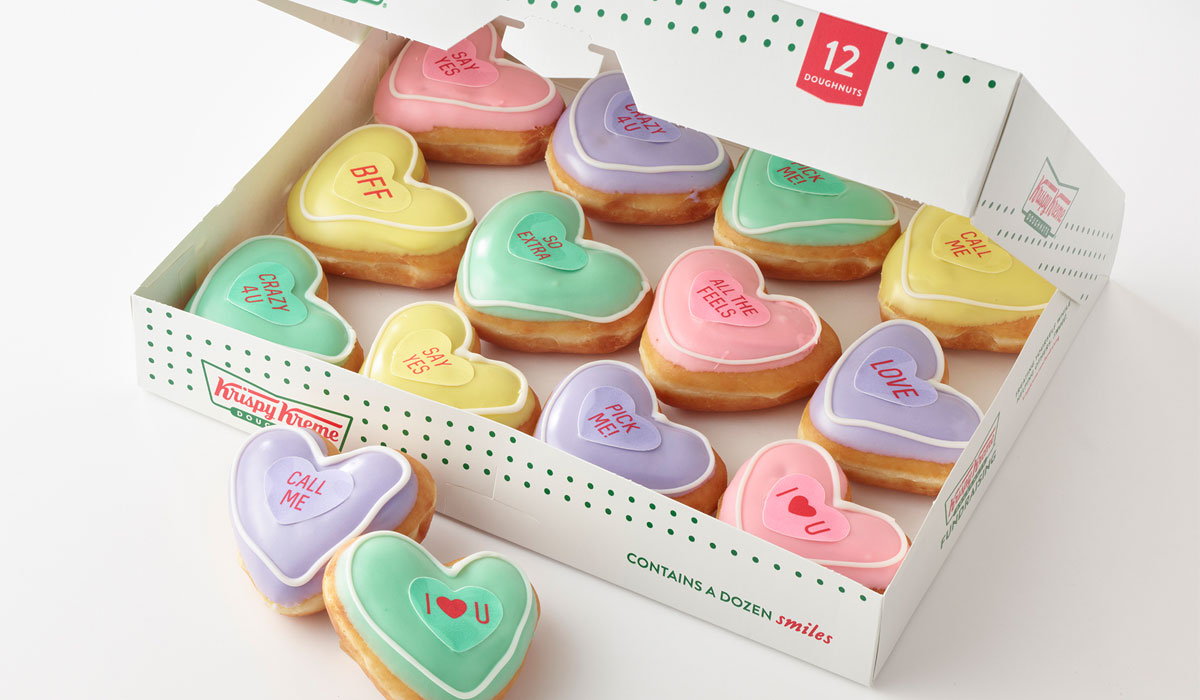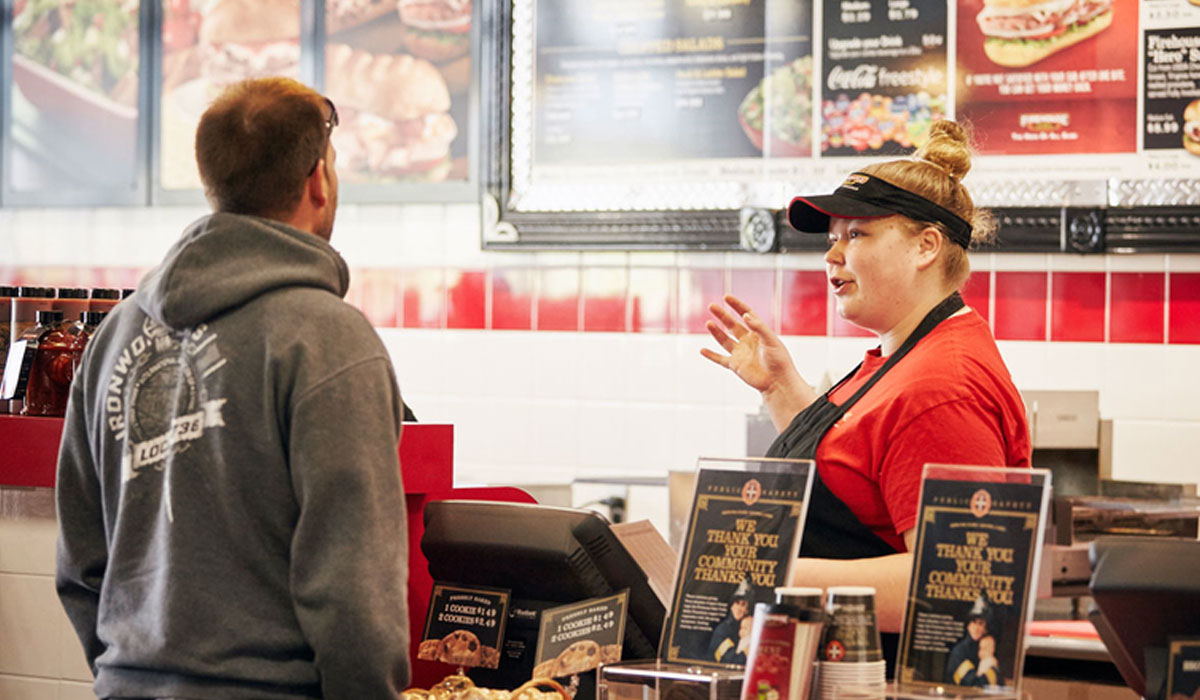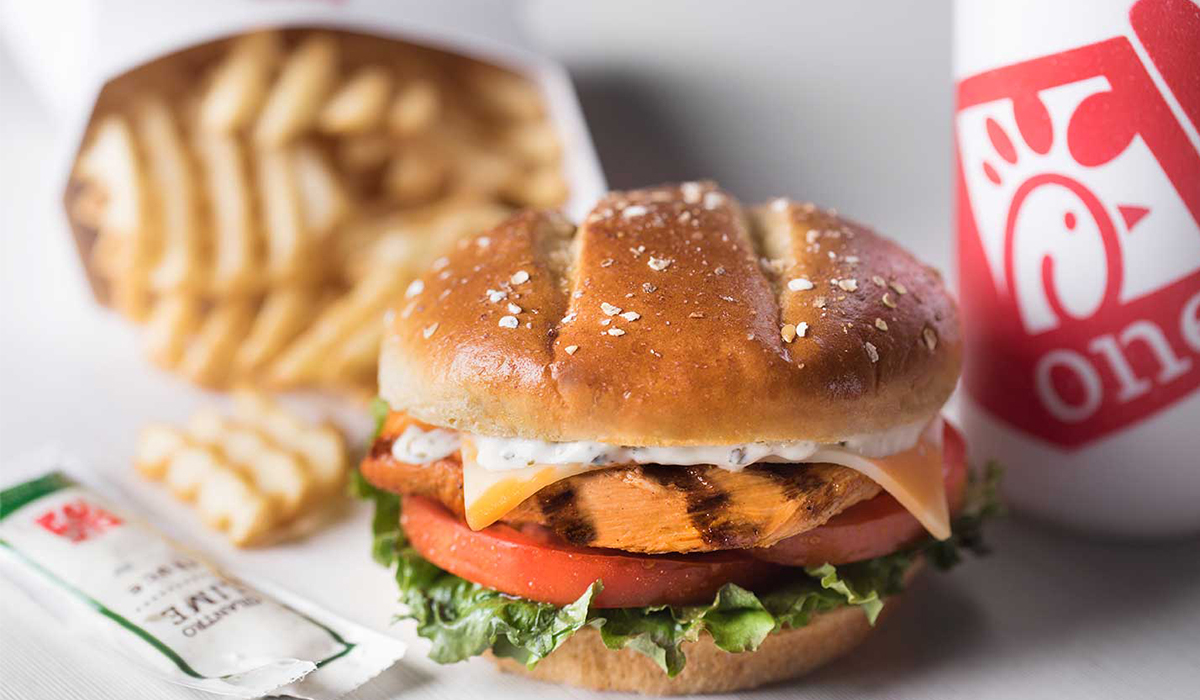Sometimes we talk about automation like it’s a magic Matrix pill. An ultra-tight labor market and wage increases are boxing quick-serves into an interesting conundrum. Can you survive the added labor costs, but still guard customer experience? Everyone wants to be the next Chick-fil-A. Yet that kind of ingrained culture took decades to build, and now it just feeds itself. The more common scenario is a Catch-22 of sorts. You want to offer outstanding customer service but you can’t afford to retain employees. Hiring quality help is one hurdle, especially given the tough-to-match incentives large brands offer. Trying to stem the triple-digit turnover tide is another. So the churn becomes something that strains a restaurant’s mission statement, even when the founder has the best of intentions.
This is one reason you see restaurant chains try to replace the human element in a way that doesn’t destroy customer experience. Kiosks that have a guest-facing employee, like McDonald’s and its Experience of the Future model. Automated ovens like Arby’s uses at some locations so employees don’t have to arrive at 7 a.m. Mobile ordering and AI systems that keep employees off the phone during peak hours.
Take this example from Dunkin’. Chief operating officer Scott Murphy told The Wall Street Journal, “We spend a lot of time training people and a month later they walk out the door.” In response, Dunkin’ assembled a focus group to discover the tasks that made employees quit. Many were menial and wouldn’t be noticed by even the most loyal customer. Things like labeling expiration dates for stock and digitalizing quality specifications for coffee grounds. Dunkin’ turned to automation as a solution.
Digital menu boards. McDonald’s in Canada boosted sales 3–3.5 percent by highlighting items, like a milkshake on a hot day, to align with customer preference. Again, these are changes intended to enhance customer service, not replace human, guest-facing interaction.
Employee scheduling with automated texts instead of emails or calls. App notifications. Training with online content and interactive programs instead of pulling hours out of a manager’s day-to-day workflow. Virtual reality software that helps new employees tour the restaurant and onboard without a “buddy system” approach.
There are endless opportunities. There’s just a balancing act of making sure your restaurant’s four-wall traffic doesn’t get kicked curbside along with off-premises orders.
Newsweek released a ranking of America’s Best Customer Service brands for 2019. A stat they pointed out: Analysts predict that by 2020, one-fifth of the country’s multitrillion-dollar retail business (this includes restaurants) will have moved to the web, slashing the number of workers needed.
The list was created so, as Newsweek said, it could “recognize a more personal factor in business success: the ways in which many companies nurture their relationships with consumers.”
This is the critical point. If your restaurant’s customers are cool with picking up their food in a cubby that doesn’t take cash, then so be it. But trying to be all things to all people, or the wrong things to the right people, can set your brand adrift in tough-to-correct ways. Newsweek teamed with global research firm Statista on the data.
They surveyed more than 20,000 U.S. customers who have either made a purchase, used a service or gathered information about a product or service in the last three years. Each customer gave their evaluation of several brands, totaling 132,954 evaluations. The survey stretched across 141 categories (we will focus just on restaurants).
The final evaluation was based on the Net Promoter Score (50 percent of the final score) and five evaluation criteria (also 50 percent).
They were:
- Quality of communication: measures whether the contact (via email, telephone or face to face) was friendly or polite.
- Technical competence: measures the quality of information received and whether questions were answered correctly and in sufficient detail.
- Range of services: measures whether one’s personal expectations and requirements were fulfilled.
- Customer focus: measures whether a personal concern/requirement was addressed with a tailored/specific solution.
- Accessibility: measures the availability of customer service in a shop or on a helpline.
Now, on to the rankings:

Bagel and sandwich chains
- Bruegger’s: 8.16
- Einstein Bros. Bagels: 8.01
- Corner Bakery Café: 7.99
Bruegger’s often ranks well in customer surveys. In October, Bruegger’s was 16th overall, a spot ahead of Burger King, in Foursquare’s Loyalty Index. That study measured consumer behavior through foot traffic analysis. Last December, the 36-year-old chain closed 30 units nationwide, primarily in Eastern markets, based on financial performance and improved positioning for future growth, the company said. The previous August, the parent company of Bruegger’s Bagels sold the brand to Caribou Coffee. Bruegger’s is part of the Coffee & Bagel Brands family and has more than 220 locations. It had 269 locations at the end of 2016, which was down from 284 two years prior.
Doughnut chains
- Krispy Kreme: 8.37
- Dunkin’: 7.98
- Duck Donuts: 7.8
No surprise on the top two. Krispy Kreme, bought by now-Panera Bread owner JAB Holdings for $1.35 billion in 2016, remains a cult favorite. Dunkin’, despite dropping the “Donuts” from its name, still splits its beverage and food about 60/40, although it’s pushing in a more beverage-led direction. That accounts for some 3 billion donuts a year. Duck Donuts is a very interesting challenge brand. First opened in North Carolina’s Outer Banks in 2006, the company launched its franchise program in 2011 and boomed to 65 units by May 2018. It also recently signed an international deal to expand in Chile, a place Dunkin’ jumped from five stores to 80 in 15 years. There are Duck Donuts open or in development in 23 states.
Fast-food restaurant chains
- Chick-fil-A: 9.11
- Sonic Drive-In: 8.21
- Arby’s: 8.21
What is there to be said about Chick-fil-A on this topic anymore? Nothing, which is about as hefty a compliment you can pay the chain. This year’s American Customer Satisfaction Index scored Chick-fil-A at 87 to rule the limited-service category. The next closed competitor—Panera—was well behind at 81. Also, 87 was the exact same ranking Chick-fil-A received in 2017. Consistency as easy to count on as that smile in the drive thru. Which, speaking of, is another year-to-year thing that boggles the operational mind. Just take a look at this “service attributes” category from QSR’s 2018 Drive-Thru Study to see how ridiculously stable Chick-fil-A’s excellence is.

Coffeehouse Chains
- Starbucks: 8.29
- Peet’s Coffee: 8.05
- Gloria Jean’s Coffees: 7.89
Breakfast chains, historically, are loyalty grabbers since they’re part of a consumer’s daily routine. That’s one reason customer service is so key at this daypart. But that doesn’t mean automation can’t help. Look at Starbucks for example. While the baristas are often very informative and pleasant, the Rewards platform is where the money is. And it’s where Starbucks can crush those in its sector, simply from a numbers standpoint. The brand added an eye-opening one million members to its base last quarter, bringing the total up to 16.3 million people. That was the biggest jump in close to four years. Starbucks has nearly 30 million U.S. customers connected digitally between its Rewards program and its digitally registered base.
Fast-casual restaurant chains
- Firehouse Subs: 8.75
- Five Guys: 8.61
- Panera Bread: 8.37
Firehouse gets the big win in an insanely competitive segment. So much so, really, that it’s being squeezed to the point where many of the fastest-growing chains nationwide have halted expansion. Some upstarts have even been forced to shutter entirely. The cream is rising to the crop in this second wave of upscale quick-service growth. Makes sense to see three of the category’s stalwarts and trailblazers at the top. Firehouse CEO Don Fox told QSR in May, “We’re having a really great year, “Especially at a time when the industry is lackluster at best.” Firehouse launched a new national advertising campaign this past year created by Dallas-based Richards Group, best known for its Chick-fil-A work. The campaign was heavily focused on digital and video—a new direction for Firehouse. It’s also launched delivery, updated to-go systems with new packaging and operations, and remained committed to the long game. “I can have all the time and money in the world, but the bottom is if I don’t have people, the business doesn’t operate,” Fox said.
Pizza chains
- Papa Murphy’s: 8.63
- Hungry Howie’s: 8.55
- Marco’s: 8.21
In November, 1,400-unit Papa Murphy’s said it was conducting a formal review of all strategic alternatives. This included, but was not limited to, a potential sale of the business. No fresh news, on that note, has surfaced since. The brand’s systemwide same-store sales dropped 2.1 percent in Q3 as it began to see traction in its turnaround strategy. Although negative, the percentage change was Papa Murphy’s best in 12 quarters. The chain released preliminary Q4 results Monday afternoon that kept the momentum going. Same-store sales fell 1.3 percent and Papa Murphy’s saw positive comps in October—its first period of growth in 37 months. “Momentum has continued into 2019, and we expect our strategic and cost saving initiatives to continue to deliver in 2019,” Weldon Spangler, chief executive officer, said in a statement. Papa Murphy’s is also working toward returning to at least a 95 percent franchise system with no more than 50 company-run restaurants by 2020. Among the changes leading the turnaround, the company said, are “the adoption of key marketing messages” that feature a low, broad, and consistent value message; a new online platform launched with Olo in March; a fresh mobile app introduced in September; and increased delivery (delivery orders upped 67 percent last quarter and was, as of November, available in more than 400 stores through partnerships with third-party providers.
Hungry Howie’s is a brand that knows all about embracing the digital realm, as you can read about in this feature. As for Marco’s, the chain plans to open a new store every three to four days in 2019 and hit 1,500 by late 2020.
Here are the rest of the categories:
Ice cream and frozen yogurt stores
- Häagen-Dazs: 8.36
- Cold Stone Creamery: 8.3
- Dippin’ Dots: 8.11
Buffet restaurants
- Pizza Ranch: 7.67
- Souplantation: 7.57
- Sirloin Stockade: 7.53
Casual-dining chains
- Cracker Barrel: 9.01
- Texas Roadhouse: 8.9
- Olive Garden: 8.52
A quick note here: Customer service is the exact arena Cracker Barrel said it’s working to reignite. Always a staple, some of the chain’s operating procedures strayed from brand aim in recent quarters. Traffic has been in the red for some time now. But many fixes, including implementing everyday value across all occasions, are in the works. Read more about Cracker Barrel’s efforts here.
Upscale chain restaurants
- Morton’s The Steakhouse: 9.02
- The Capital Grille: 8.86
- Ruth’s Chris Steak House: 8.67








